January might not be the time of year that most people think of taking a European vacation, especially to the north where sunlight is rare and there has been a record amount of snow this winter. But, foolhardy as we are (a word whose dictionary definition is strikingly befitting: “Adventurous or bold but lacking in good sense”), Mikel and I thought it would be fun to combine a weekend meeting he had to attend in Amsterdam with a train/ferry tour through Ireland, the UK, and France.
Why those countries, you might ask, and not somewhere in the sunny Mediterranean? Well, on my part it was pure ignorance, really. I’ve never been to Europe in a meaningful way (i.e., not during a stopover or at the nearly forgotten age of 15), except for an impulsive trip to Italy last spring that really whetted my appetite for Europe.
In fact, what led to this clumsy itinerary was similar to the ruse of blindly putting one’s finger on a spinning globe – I simply looked up the prices of air tickets to all the countries in Europe, and it turned out that Ireland had the cheapest flight. Sounds like a deal! But, several hundred dollars worth of train and ferry tickets later, I had to rethink this budget-shopper rationale. It’s much like entering a store with a coupon for ten dollars off, and walking out with $200 of merchandise (your puny ten doesn’t even cover tax).
It was consistently beautiful and astonishing and fascinating. On the flip side, we came close to throttling each other on more than one occasion, I vomited during the bus tour from some cocktail of jet lag, sleeping pills and Irish breakfast, and we faced the reality that Europe is yet to become in any way accessible to either the handicapped or those with large luggage.
I don’t think I’d ever been a tourist in the purest sense until this trip, and I must say it’s not necessarily the way to go. Being a pure tourist means you show up at a hotel having no idea what to do, just wanting to “see the sights”. It means you are dependent entirely on various websites or brochures advertising these sights. In my case it also means that you haven’t had time to properly plan anything and find yourself waking up in a new city and trying to remember what it was you once heard was the thing to see there.
That said, I hereby present my brief impressionistic thoughts about our destinations.
Ireland:
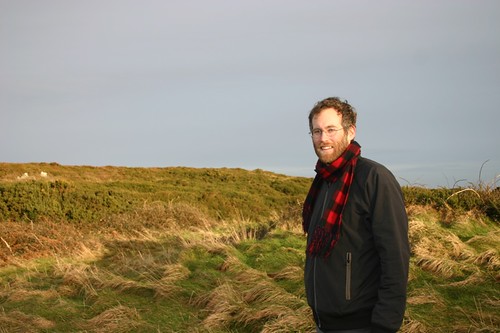
It might be worth a $500 round trip ticket to Dublin just to quaff a few creamy pints of Guinness as God meant it to taste. I finally understand how they can drink the stuff by the gallon. Sitting in a crowded bar late on a Friday night, a youthful band played lively music with a mix of traditional and new instruments while we sat sipping our drinks and watching the party. Still jetlagged, it was a bit like coming across Mr. Fezziwig’s ball during Jiminy Cricket’s tour in a Christmas Carol; watching the revelry but nearly invisible, privy to an intimate scene. The drunken patrons were aged anywhere from 20 to 60, dancing up a storm and here and there breaking into Irish dance, the band occasionally giving in to a traditional song so everyone could sing along. I could actually feel just the slightest tingling of familiarity — the tunes, the straight-armed hopping Irish dancing, the mix of despair and mirth in the songs, the way the bus driver slipped in stories of murders and suicides in a hushed voice while we drove the countryside (“ah, poor lad, what-a-shame”). I’ve never before been in the midst of a foreign culture whose influence I could feel in my own Irish-Catholic-tinged upbringing, in my own roots, and a nice homecoming it was.
Wales:
It was a mere three hours we had in Wales between ferry and train, but a lovely tea in a local diner was served with such an exquisitely executed scone and helpful manner that I left thinking Wales must be a bit like Midwestern America: down-to-earth and comforting, if a bit old-fashioned, like your grandmother.
London:
Upon arrival to London, I posted to Facebook: it’s like Manhattan, but more sinister. After four days there, I have to stick by that. Perhaps it’s the dreary winter weather, but London was dingy, gothic, and severe, and I loved it. We went from Tate modern to Westminster to Brick Lane (a kind of hipster haven) where we ate lox and cream cheese bagels at odd hours. The greatest surprise for me was the quick rekindling of my love for fashion – the dark yet frilly look seen about town had an air of quirky haughtiness that inspired me to wear my high-heeled boots every day in lieu of tennis shoes and thereby give myself shin splints. To be honest, London felt almost frightening at first; the coffee shop seemed sharp and filthy in a way that surpassed Brooklyn’s seediest, the apartments cramped and musty. But after a few days I envisioned a whole new vintage-clothed version of myself wandering the cobblestone graffiti art corridors and welcomed the thrill.
Brussels:
They seem to worship a small boy peeing. The waiters were uppity and brisk and may as well have been wearing pince-nez and waxed moustaches. They have paid centuries of obsessive attention to beercraft with unmatched results. They favor chocolate and giant waffles overflowing with strawberries and whipped cream. The main square contains the most ostentatious flaunting of exuberantly baroque architecture I’ve seen yet. This all leads me to conclude that this is a most whimsical culture. I happen to consider whimsy a high form of intelligence.
Amsterdam:
The thing to appreciate in Amsterdam is design. A culture which I find a bit impenetrable became clearer to me on a solitary sojourn through snowy streets in a residential neighborhood of houseboats smelling of woodsmoke. Then, I encountered the library. The public library is like living inside an iPod. The design is smooth and white with rounded corners, managing, like Apple, to feel futuristic yet warm and friendly, hip yet welcoming even the squarest, a populist kind of library. It boasted a public piano complete with a sign clarifying, “30 minute limit – only experienced players, please.” And, obligingly, the sounds of classical piano wafted up through the central atrium from a volunteer at the keys. Rather than being filled with too many books, the main feature of the library is in fact a multitude of lovely Macs to serve the public, who may browse from the comfort of cushy white sofas while taking in an exquisite view of the city. There is a sense of everything being available, without a fuss, a city that above all works – everyone calmly bicycling through the snowstorm obeying traffic signals. I often find that a mite boring in a place, but this time I relaxed in the peaceful, streamlined atmosphere of an ideal liberal society.
Paris
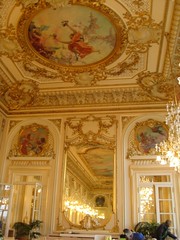
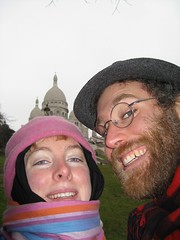
I was surprised to find Paris a bit rough and dirty, maybe owing to our overhasty selection of hotel over the web from the bargain barrel. It hardly seemed the refined and posh city I envisioned, with more street beggars and homeless than anywhere else we visited. At the same time, its opulence and majesty was undiminished in the likes of the regal buildings, ornate gold-leaf interiors, wide promenades, astounding art collections, and the flair of class in the street fashion. But what charmed me in the end was the French language. I loved sounding out the words written everywhere, whether I understood them or not (to Mikel’s dismay), and after a few days the cobwebs came off and the rusty gears began to churn in the section of my brain that once spoke high school French. The curlicues of the language seemed to mirror the frilliness of the gothic architecture, showcasing form over function.
Vennes, Brittany
Here, I enjoyed the charm of what must be the “real” France to some – small shops, cobblestone streets, a slower pace of life, allowing time for the richness to soak in. That is, absolutely mouthwatering pastries, croissants, baked buttery goodness everywhere. At Mikel’s friend Nicolas’ house where we stayed, fresh baguette and cheese, Brittany’s regional crepes, cider, and even fresh caught sting ray for dinner. Like in Amsterdam, I found everything to be designed just so, with no clutter. Children’s toys were wooden basics with bright colors and fine construction, as though made by elves. The whole town felt wholesome, loving, and warm. We were ready to move in.
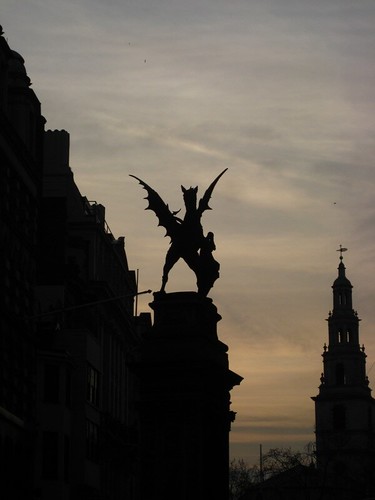


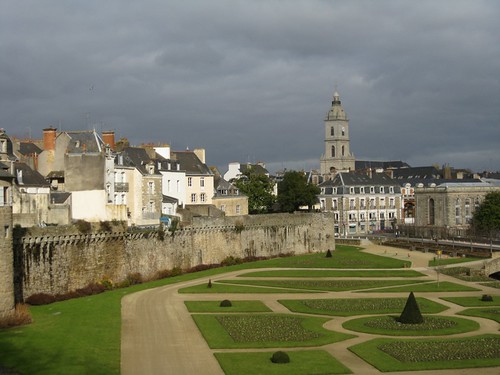



 After that, we mostly slept, ate and lounged in the cabin known as a banda. Not bad. It’s funny, though, watching the groups of tourists come and go from such a place. It reminds me that the tourist is often so isolated from the environment, kept separate by design- nice Kenya, pretty things to see, eat and drink, hakuna matata, no problem. It is so much more interesting to know the story of where you are, who lives there, what happened to this place during and after colonialism. In Kenya I notice touches of Britain everywhere – and even the colonists themselves and their descendants are still around, if lying low – like a quiet but powerful animal sated and enjoying its repose. I find it decidedly strange. In a resort area like Naivasha, they serve brown sauce and fat sausages and beans for breakfast. The camp that we vacated initially was owned by a white Kenyan family. What’s their story, why have they stuck around, and how exactly do they fit in – or not – with the rest of Kenya? – these questions fascinate me here. In India one finds British influence everywhere – maybe even more so – but as for British people, well, they’ve long since fled.
After that, we mostly slept, ate and lounged in the cabin known as a banda. Not bad. It’s funny, though, watching the groups of tourists come and go from such a place. It reminds me that the tourist is often so isolated from the environment, kept separate by design- nice Kenya, pretty things to see, eat and drink, hakuna matata, no problem. It is so much more interesting to know the story of where you are, who lives there, what happened to this place during and after colonialism. In Kenya I notice touches of Britain everywhere – and even the colonists themselves and their descendants are still around, if lying low – like a quiet but powerful animal sated and enjoying its repose. I find it decidedly strange. In a resort area like Naivasha, they serve brown sauce and fat sausages and beans for breakfast. The camp that we vacated initially was owned by a white Kenyan family. What’s their story, why have they stuck around, and how exactly do they fit in – or not – with the rest of Kenya? – these questions fascinate me here. In India one finds British influence everywhere – maybe even more so – but as for British people, well, they’ve long since fled.


 There is really no way to know quite what to expect in advance when you’ve entered a new culture. Even operating in English, signals are uninterpretable, people hard to read, and I sometimes feel that all the
There is really no way to know quite what to expect in advance when you’ve entered a new culture. Even operating in English, signals are uninterpretable, people hard to read, and I sometimes feel that all the I learned that you could send money to almost anyone, including the cop pressing you for a bribe. We were even told muggers might demand your
I learned that you could send money to almost anyone, including the cop pressing you for a bribe. We were even told muggers might demand your